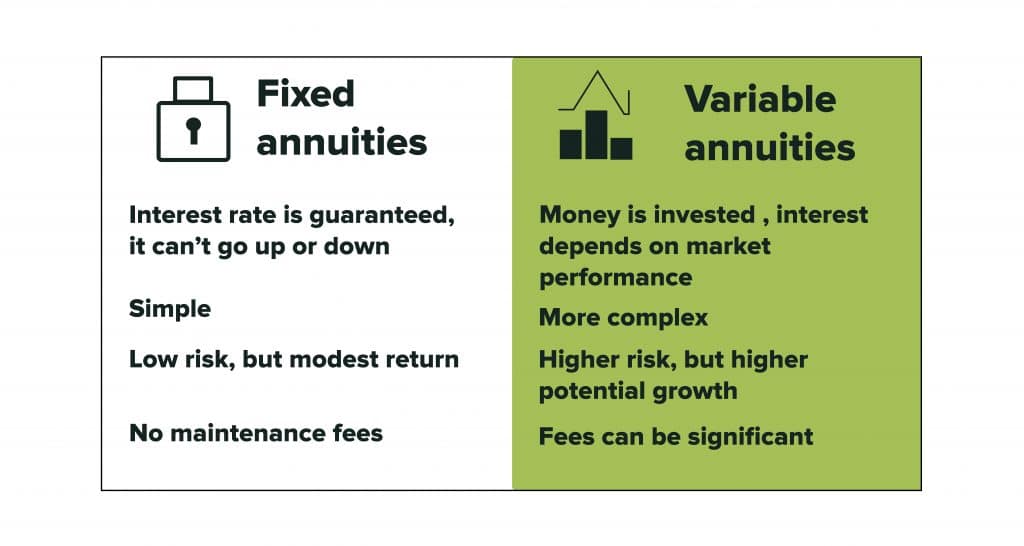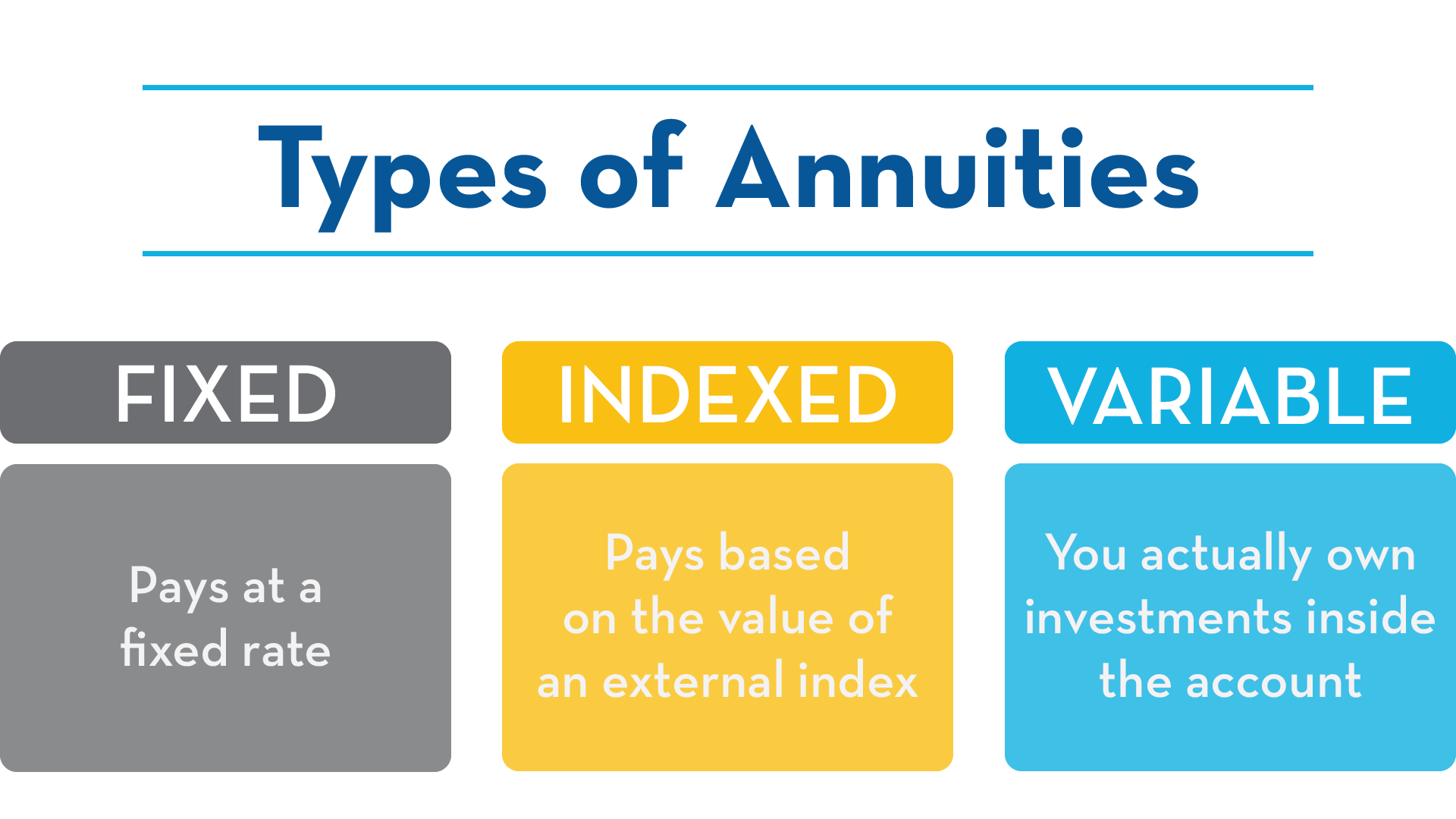All Categories
Featured
Table of Contents
Simply as with a dealt with annuity, the owner of a variable annuity pays an insurance provider a round figure or series of settlements for the guarantee of a collection of future payments in return. As pointed out over, while a dealt with annuity grows at an ensured, constant price, a variable annuity grows at a variable rate that depends upon the performance of the underlying investments, called sub-accounts.

Throughout the buildup phase, assets spent in variable annuity sub-accounts expand on a tax-deferred basis and are taxed just when the agreement owner takes out those incomes from the account. After the buildup phase comes the earnings phase. Over time, variable annuity possessions need to theoretically increase in worth until the agreement proprietor decides she or he would such as to start withdrawing cash from the account.
One of the most significant problem that variable annuities typically existing is high expense. Variable annuities have several layers of costs and expenses that can, in aggregate, develop a drag of up to 3-4% of the agreement's worth annually. Below are one of the most typical fees related to variable annuities. This expense makes up the insurer for the danger that it assumes under the terms of the contract.
Understanding What Is A Variable Annuity Vs A Fixed Annuity A Closer Look at How Retirement Planning Works Defining What Is Variable Annuity Vs Fixed Annuity Benefits of Variable Annuity Vs Fixed Annuity Why What Is Variable Annuity Vs Fixed Annuity Matters for Retirement Planning Fixed Vs Variable Annuity: Explained in Detail Key Differences Between Fixed Vs Variable Annuities Understanding the Key Features of Fixed Interest Annuity Vs Variable Investment Annuity Who Should Consider Strategic Financial Planning? Tips for Choosing the Best Investment Strategy FAQs About Planning Your Financial Future Common Mistakes to Avoid When Planning Your Retirement Financial Planning Simplified: Understanding Your Options A Beginner’s Guide to Smart Investment Decisions A Closer Look at Deferred Annuity Vs Variable Annuity
M&E cost charges are determined as a percentage of the agreement worth Annuity companies pass on recordkeeping and various other management costs to the contract owner. This can be in the kind of a flat yearly fee or a percent of the contract value. Management costs may be included as part of the M&E threat charge or might be examined separately.
These charges can vary from 0.1% for easy funds to 1.5% or more for actively handled funds. Annuity agreements can be personalized in a variety of means to serve the specific requirements of the agreement proprietor. Some common variable annuity bikers consist of assured minimum build-up benefit (GMAB), ensured minimum withdrawal advantage (GMWB), and assured minimal earnings benefit (GMIB).

Variable annuity payments provide no such tax reduction. Variable annuities have a tendency to be very ineffective lorries for passing wide range to the next generation since they do not appreciate a cost-basis adjustment when the initial agreement owner dies. When the proprietor of a taxable investment account passes away, the expense bases of the financial investments kept in the account are adapted to mirror the market rates of those investments at the time of the owner's fatality.
Understanding Financial Strategies A Closer Look at Fixed Index Annuity Vs Variable Annuity Defining Fixed Vs Variable Annuity Pros And Cons Pros and Cons of Various Financial Options Why Fixed Index Annuity Vs Variable Annuities Can Impact Your Future How to Compare Different Investment Plans: A Complete Overview Key Differences Between Different Financial Strategies Understanding the Key Features of Long-Term Investments Who Should Consider Strategic Financial Planning? Tips for Choosing Variable Annuity Vs Fixed Annuity FAQs About Planning Your Financial Future Common Mistakes to Avoid When Planning Your Retirement Financial Planning Simplified: Understanding Your Options A Beginner’s Guide to What Is Variable Annuity Vs Fixed Annuity A Closer Look at Indexed Annuity Vs Fixed Annuity
Such is not the instance with variable annuities. Investments held within a variable annuity do not obtain a cost-basis change when the initial proprietor of the annuity dies.
One considerable problem associated with variable annuities is the potential for conflicts of passion that may feed on the part of annuity salesmen. Unlike an economic expert, that has a fiduciary responsibility to make investment decisions that profit the customer, an insurance coverage broker has no such fiduciary obligation. Annuity sales are very rewarding for the insurance coverage professionals who offer them since of high ahead of time sales payments.

Numerous variable annuity contracts consist of language which positions a cap on the percent of gain that can be experienced by particular sub-accounts. These caps stop the annuity proprietor from completely getting involved in a part of gains that could otherwise be appreciated in years in which markets create significant returns. From an outsider's point of view, it would certainly appear that financiers are trading a cap on financial investment returns for the abovementioned assured floor on investment returns.
As noted above, surrender costs can seriously limit an annuity owner's capacity to move assets out of an annuity in the early years of the contract. Additionally, while a lot of variable annuities permit agreement owners to take out a defined amount during the build-up stage, withdrawals yet amount normally result in a company-imposed fee.
Withdrawals made from a fixed rate of interest investment alternative can also experience a "market value modification" or MVA. An MVA readjusts the worth of the withdrawal to show any kind of changes in rates of interest from the moment that the money was bought the fixed-rate choice to the moment that it was taken out.

On a regular basis, also the salesmen that sell them do not completely recognize just how they function, and so salesmen in some cases take advantage of a customer's emotions to market variable annuities rather than the qualities and suitability of the products themselves. We think that capitalists should totally understand what they own and just how much they are paying to possess it.
Understanding Fixed Vs Variable Annuity Pros And Cons A Comprehensive Guide to Investment Choices Breaking Down the Basics of Investment Plans Features of Smart Investment Choices Why Fixed Vs Variable Annuity Can Impact Your Future How to Compare Different Investment Plans: Simplified Key Differences Between Variable Annuities Vs Fixed Annuities Understanding the Risks of Long-Term Investments Who Should Consider Strategic Financial Planning? Tips for Choosing the Best Investment Strategy FAQs About Planning Your Financial Future Common Mistakes to Avoid When Planning Your Retirement Financial Planning Simplified: Understanding Your Options A Beginner’s Guide to Smart Investment Decisions A Closer Look at How to Build a Retirement Plan
Nonetheless, the very same can not be claimed for variable annuity properties held in fixed-rate investments. These possessions legally belong to the insurance provider and would certainly for that reason go to risk if the firm were to fail. Likewise, any warranties that the insurance provider has agreed to give, such as an ensured minimal earnings advantage, would be in inquiry in the occasion of an organization failure.
For that reason, potential buyers of variable annuities should comprehend and think about the economic problem of the providing insurance provider prior to getting in into an annuity contract. While the advantages and disadvantages of various types of annuities can be debated, the actual problem bordering annuities is that of viability. Simply put, the question is: that should have a variable annuity? This inquiry can be challenging to answer, offered the myriad variants readily available in the variable annuity universe, but there are some fundamental standards that can help investors make a decision whether annuities must play a duty in their financial strategies.
Nevertheless, as the saying goes: "Purchaser beware!" This article is prepared by Pekin Hardy Strauss, Inc. Tax benefits of annuities. ("Pekin Hardy," dba Pekin Hardy Strauss Wide Range Monitoring) for informational purposes just and is not planned as an offer or solicitation for company. The details and information in this post does not make up lawful, tax, accountancy, investment, or various other expert recommendations
Table of Contents
Latest Posts
Breaking Down Pros And Cons Of Fixed Annuity And Variable Annuity Everything You Need to Know About Fixed Income Annuity Vs Variable Annuity Defining the Right Financial Strategy Pros and Cons of Vari
Highlighting the Key Features of Long-Term Investments Key Insights on Indexed Annuity Vs Fixed Annuity Breaking Down the Basics of Investment Plans Benefits of Choosing the Right Financial Plan Why C
Analyzing Strategic Retirement Planning Everything You Need to Know About Financial Strategies Defining Fixed Vs Variable Annuity Pros And Cons Features of Tax Benefits Of Fixed Vs Variable Annuities
More
Latest Posts